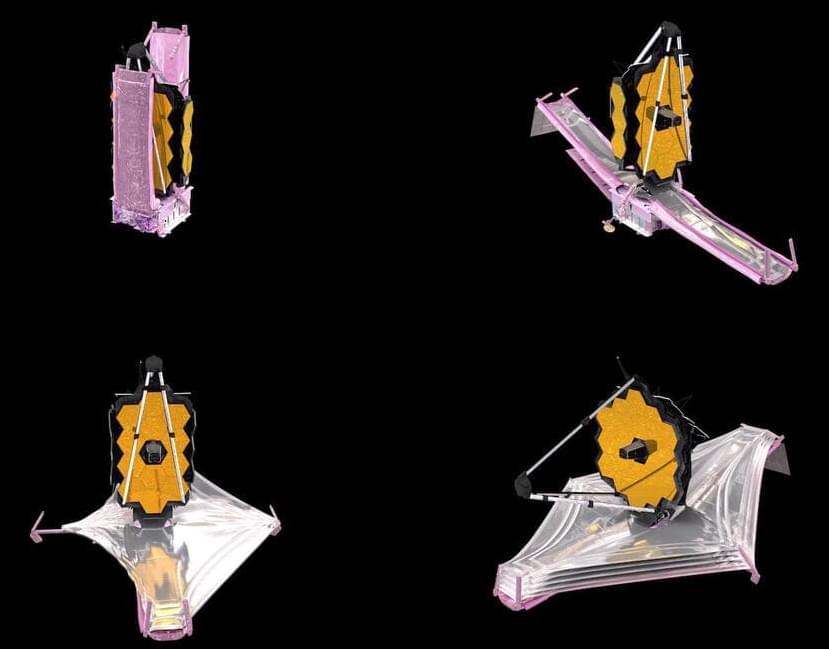So far, so good for the revolutionary telescope that is heading toward deep space, but challenges remain.



Hackers breached the computer networks of a southeast Florida health care system in October and may have accessed sensitive personal and financial information on over 1.3 million people, the health care system announced this week.
Social Security numbers, patient medical history and bank account information are among the data that have been exposed in the breach of Broward Health, a network of over 30 health care facilities serving patients across roughly 2 million-person Broward County, Florida, according to a notice the health care provider filed with the Office of the Maine Attorney General.
About 470 of the data breach victims live in Maine. Like other states, Maine law requires organizations that hold state residents’ personal data to file a disclosure when they’ve been hacked.

A cheap, widely available drug used to treat mental illness cuts both the risk of death from COVID-19 and the need for people with the disease to receive intensive medical care, according to clinical-trial results1. The drug, called fluvoxamine, is taken for conditions including depression and obsessive-compulsive disorder. But it is also known to dampen immune responses and temper tissue damage, and researchers credit these properties with its success in the recent trial. Among study participants who took the drug as directed and did so in the early stages of the disease, COVID-19-related deaths fell by roughly 90% and the need for intensive COVID-19-related medical care fell by roughly 65%.
Study co-author Angela Reiersen, a psychiatrist at Washington University School of Medicine in St Louis, Missouri, has long been interested in using fluvoxamine to treat a rare genetic condition. While monitoring the fluvoxamine literature before the pandemic, she came across a 2019 study showing that fluvoxamine reduced inflammation in mice with sepsis2. When COVID-19 hit, “I immediately thought back to that paper with the mice,” she says.
Reiersen and her colleagues partnered with the organizers of the TOGETHER Trial, which aims to identify approved drugs that can be repurposed to treat COVID-19. The team’s study included 1,497 people in Brazil who had COVID-19 and were at high risk of severe disease. Roughly half received fluvoxamine, and the rest received a placebo.
The trial’s results, published on 27 October, mean that fluvoxamine is one of a handful of therapies that show strong evidence of preventing progression from mild to severe COVID-19. The only early-stage treatments currently recommended by the US National Institutes of Health are monoclonal antibodies, which are costly and difficult to administer in an outpatient setting.

Samsung is letting users re-imagine what their spaces can be.
It’s not often that a tech company presents a consumer product that feels truly new, but Samsung might have done it.
It’s not the tech specs that make the company’s new Freestyle projector stand out. They’re good but not groundbreaking. What’s different about the product unveiled this evening at a keynote address in the Venitian hotel on the Las Vegas strip is — ahem — the vibe.
Will that be enough to make the $899 projector-speaker-lifestyle engine the next big thing in tech? That’s in cusomers’ hands now.
Full Story:
It’s also building chips for Microsoft’s AR glasses.
At the 2022 Consumer Electronics Show (CES) currently taking place in Las Vegas, chip maker Qualcomm’s CEO Cristiano Amon announced several key new initiatives.
Amon described Qualcomm’s technology roadmap as including connectivity, and Qualcomm’s Snapdragon premium-tier Android smartphones. Snapdragon is a suite of system-on-a-chip (SoC) semiconductor products whose central processing units (CPUs) utilize the ARM architecture.
Qualcomm’s new initiatives will be in the spaces of: next-generation ARM PCs, the metaverse, wireless fiber, Advanced Driver-Assistance Systems (ADAS), and virtual and augmented reality (VR/AR).
Full Story:

If you had a few hundred experiments to manage during your days in space, how would you blow off steam in your spare time?
A badminton match was the activity of choice for International Space Station astronauts and spaceflight participants during the holidays. You can catch a short video of the activities of several crew members of Expedition 66 below; make sure to rotate it so you can watch the crew members working in 360 degrees.
The module they are using is the Japanese Kibo module, which is a common location for crews to conduct press conferences. The Kibo module also has a little more space for physical activities than some of the other ones, especially since there are no laptops or delicate experiments crowding the walls.
Space agencies around the world ask their astronauts to exercise for about 90 minutes to two hours a day, which does everything from keeping their bones and muscles secure for Earth living again, to providing mental well-being.
While the match was all in good fun, professional astronauts have a long-term goal of studying medicine on the International Space Station, both to prepare for long-duration missions to the moon and also to help seniors on Earth.
Full Story:
With plans for a nationwide rollout in the United States.
While the coronavirus pandemic undoubtedly brought grave hardships to most of us, it has also provided some opportunity for innovation. At this year’s CES 2022, the world’s largest technology show that takes place in Las Vegas, Nevada, the tech startup Ottonomy IO presented tremendous progress in building fleets of autonomous delivery robots. Its machines have already been employed at retail locations around the U.S., with a very real possibility they are coming to a store or drive-through near you soon.
How the robots work.
At CES, Ottonomy IO explained how its robot delivery service functions. Once you make an order online through an app, the package you ordered gets placed in a cart-like robot, which navigates to a designated pickup location, which can be quite flexible. After the robot finds you, it scans your phone, then opens up a secure locker inside, allowing you to pick up your package. One major advantage of this human-less process from a Covid-safety standpoint is that the whole interaction is contactless.

A large, rocky asteroid is going to fly by Earth next week.
At 1 kilometer (3,280 feet) long, it’s roughly two and a half times the height of the Empire State Building, and it’s been classed a “Potentially Hazardous Asteroid” due to its size and its regular close visits to our planet.
But don’t worry, this month’s visit is going to have a very safe clearance, with the asteroid zipping by at a distance of 1.93 million kilometers (~1.2 million miles) away from Earth – that’s roughly 5.15 times more distant than the Moon.

Hackers used a cloud video hosting service to perform a supply chain attack on over one hundred real estate sites that injected malicious scripts to steal information inputted in website forms.
These scripts are known as skimmers or formjackers and are commonly injected into hacked websites to steal sensitive information entered into forms. Skimmers are commonly used on checkout pages for online stores to steal payment information.
In a new supply chain attack discovered by Palo Alto Networks Unit42, threat actors abused a cloud video hosting feature to inject skimmer code into a video player. When a website embeds that player, it embeds the malicious script, causing the site to become infected.

New Zealand’s fossil record of land dinosaurs is poor, with just a few bones, but the collection of ancient extinct marine reptiles is remarkable, including shark-like mosasaurs and long-necked plesiosaurs.
Plesiosaurs first appeared in the fossil record around 200 million years ago and died off, alongside dinosaurs, 66 million years ago.
They are best known for the fanciful but appealing idea, suggested by British scientist Sir Peter Scott, that the fabled Loch Ness monster was in fact a plesiosaur that somehow outlasted all other giant reptiles and remained undetected throughout human history.